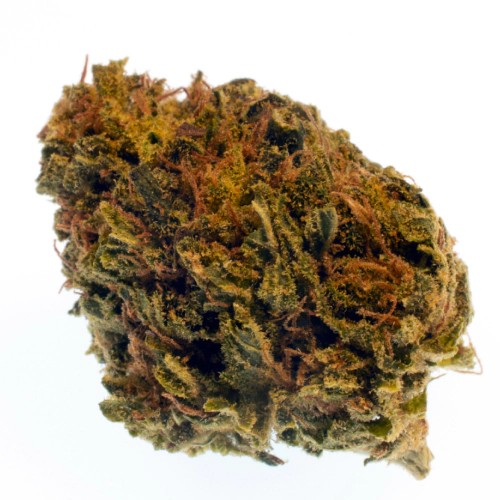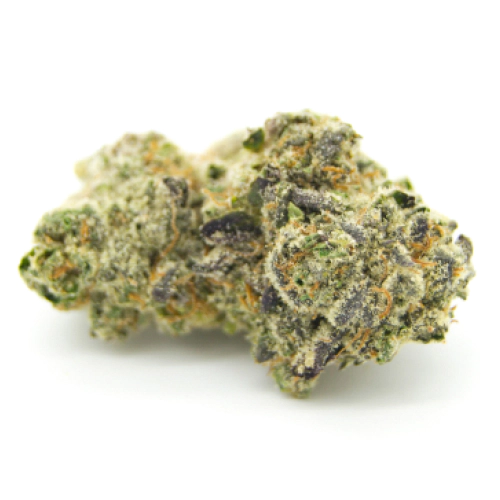THC 11.9 - 15.9%
CBD 0.71 - 1.67%
Effect Talkative
Flavor Vanilla
11.1 - 14.1%
0.15 - 0.99%
0.47 - 1.14%
Honey, Chestnut
Uplifted
The Afghan strain is a pure Indica landrace cannabis, allegedly originating from the Mazar-i-Sharif region of Afghanistan. Usually, it demonstrates a low THC level of 11.1%, but there are cannabis cuts that are tested at 14.1%. The CBD contents varies from almost zero (0.15%) to nearly 1% (0.99%). Cannabinoids that are found in this plant are as follows:
The Afghan weed strain is not potent and can be consumed by new users and recreational smokers. If you want to try to grow it you can find two types of seeds: Afghan seeds feminized and Afghan seeds autoflower.
In addition to a low THC content, the kush combines multiple terpenes, including limonene, ocimene, and phellandrene. The scent offered by limonene is plum, while ocimene adds honey and earthy notes that make the smell appealing to any stoner. Phellandrene carries a chestnut hint to the aroma palette.
The Afghan strain is known for its uplifting and happy effects. The high it delivers is calm and helps people become concentrated. Also, smokers feel waves of energy, which makes them quite productive. In some individuals, this weed provokes chit-chat.
For starters and medical marijuana users, the most apparent benefit of Afghan is in treating inflammation and other painful conditions. Also, it helps relieve stress, anxiety, depression, and other negative consequences of mental and mood disorders.
Side effects associated with smoking this strain are not common but may occur if potheads use too much of it. They may expect reactions such as:
Home cultivators who want to try their hand at growing the Afghan strain can expect plants of 30-60 inches in height with a flowering time of 67-75 days. The harvest period starts in 81 days. People who find indoor cultivation more realistic will get crops of 0.5-1 oz./ft2. In an outdoor scenario, gardeners are rewarded with more plentiful crops of 10-15 oz./plant. The seeds of this plant are available for sale, though it is more popular in Colorado and on the West Coast.
| THC | Tetrahydrocannabinol, or THC, is a major cannabis chemical compound. It is a psychoactive element that stimulates dopamine release and induces euphoria or happiness. THC-rich strains may be helpful with such conditions as lack of appetite, chronic pains , etc. It is considered to be the primary active marijuana component. | 11.1 - 14.1% |
| CBD | Cannabidiol, or CBD, is a major compound in cannabis, which is non-psychoactive. It is also proved to counteract the side effects of the second major component THC. CBD is widely used for medicinal purposes in rubs, oils and so on. It is helpful in muscle pain cases, may treat arthritis and migraines. Even Greeks used it against pain, while Queen Victoria applied it to get rid of menstrual cramps. | 0.15 - 0.99% |
| CBC | Cannabichromene, or CBC, is a minor cannabinoid, meaning that its quantity in cannabis is quite little. Though it has the same origin as CBD and THC, it is different in functions. Without any psychoactive effects, it is an efficient cannabis compound in combating acne and depression. CBC produces analgesic, antibacterial and anti-inflammatory effects. | 0.18 - 1.02% |
| CBG | Cannabigerol, or CBG, is one of the minor cannabis compounds in adult plants. On the other hand, young ones contain a lot of this antibacterial and anti-inflammatory component. During the growth, CBG is converted into different cannabinoids, mostly THC and CBD. The compound itself increases appetite and decreases eye pressure. | 0.47 - 1.14% |
| CBN | Cannabinol, or CBN, is a trace element in cannabis that is considered to be mildly psychoactive. It appears from oxidation THC, exposed to light and heat. CBN is mostly contained in old cannabis and in traditional hashish. It is effective against insomnia, bacterial infections and appetite loss. | 0.02 - 0.2% |
| THCV | Tetrahydrocannabivarin, or THC-V, is a compound contained in cannabis in trace amounts. Even though it is close to THC molecularly, it is different in effects. This compound may be psychoactive only in large amounts. THC-V reduces blood sugar, controls appetite, stimulates bone growth, etc. African Sativa strains are the richest in THC-V. | 0.41 - 1.13% |
| Ocimene | Ocimene (derived from the Ancient Greek word Ocimum meaning basil) is a terpene with sweet and herbaceous flavors, also boasting citrusy and woody undertones. Naturally, ocimene occurs in mint, parsley, orchids, hops, kumquats, mangoes, basil, bergamot, lavender, and pepper. Offers antifungal, anti-inflammatory, and antiviral properties. | 0.24% |
| Limonene | Limonene (also known as d-limonene) is the second most common terpene in nature and the third most common terpene in cannabis. It has a powerful citrus aroma and can be found in all citruses, including lemons, oranges, grapefruits, limes, juniper, etc. Limonene is known to elevate moods and provide anxiety, depression, and stress relief. | 0.3% |
| Eucalyptol | Eucalyptol (also known as cineole) is usually found in eucalyptus, mint, sage, and tea tree oil. Distinguished for its cooling properties, eucalyptol constitutes only up 0.6% of a total terpene profile of a strain. This terpene exhibits potent antibacterial effects and can also be used to treat patients with Alzheimer's disease and asthma. | 0.21% |
| Phellandrene | Phellandrene (also known as alpha- and beta-phellandrene) is one of the rare terpenes found in cannabis with antihyperalgesic and antidepressive properties. Phellandrene contributes to a minty, woody, and mildly citrus aroma in cannabis. Previously confused with limonene and pinene, phellandrene was eventually distinguished as a separate terpene common for eucalyptus. Also, it could be found in mint, dill, black pepper, cinnamon, parsley, pine, and lavender. | 0.24% |
| Total terpenes content | 0.99% |
THC 11.9 - 15.9%
CBD 0.71 - 1.67%
Effect Talkative
Flavor Vanilla

THC 5.8 - 8.2%
CBD 3.53 - 11.76%
Effect Relaxed
Flavor Pine
THC 22 - 26%
CBD 0.34 - 0.73%
Effect Creative
Flavor Spicyherbal
THC 21 - 25.5%
CBD 0.02 - 0.46%
Effect Focused
Flavor Mint
THC 17.12 - 22.75%
CBD 0.07 - 0.42%
Effect Tingly
Flavor Grape
THC 22 - 24.5%
CBD 0.4 - 0.56%
Effect Euphoric
Flavor Sweet
THC 16 - 18.5%
CBD 0.94 - 1.24%
Effect Relaxed
Flavor Earthy
THC 12.8 - 15.2%
CBD 0.49 - 0.8%
Effect Relaxed
Flavor Skunk

THC 21 - 23.75%
CBD 0.34 - 0.5%
Effect Sleepy
Flavor Sweet

THC 20.25 - 22.25%
CBD 0.48 - 0.78%
Effect Euphoric
Flavor Sweet

THC 20 - 23%
CBD 0.38 - 0.49%
Effect Sleepy
Flavor Earthy
THC 19 - 20.33%
CBD 0.46 - 0.65%
Effect Happy
Flavor Sweet
THC 12 - 21%
CBD 0.49 - 1.05%
Effect Aroused
Flavor Tar

THC 15.75 - 18.25%
CBD 3.3 - 3.8%
Effect Euphoric
Flavor Spicyherbal
THC 20.5 - 22%
CBD 0.28 - 0.64%
Effect Uplifted
Flavor Diesel
THC 20.2 - 21.6%
CBD 0.32 - 0.61%
Effect Relaxed
Flavor Sweet
THC 21 - 25%
CBD 0.05 - 0.26%
Effect Concentrated
Flavor Honey
THC 17 - 22.67%
CBD 0.4 - 0.89%
Effect Euphoric
Flavor Diesel
THC 19.88 - 21.12%
CBD 0.35 - 0.57%
Effect Relaxed
Flavor Diesel
THC 15 - 21%
CBD 0.39 - 0.82%
Effect Hungry
Flavor Lime
Be the first and share your opinion
Write a Review